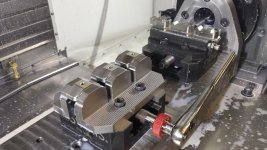So how would it be zero backlash? If you visualise the roller filling the groove in the worm, then it becomes apparent that on one side, the surface of the worm is moving opposite to the direction of rotation on that side of the roller. So there needs to be some clearance, or it will create its own clearance. That being said, there should be no reason that the operational backlash would tend to increase over the lifetime of the unit, apart from the bearings in each cam roller wearing out, I guess, but even those aren't necessarily free of all clearance either.
I suppose that the maximum attainable speed should be very high with the roller bearing unit, probably with much less stirring of oil, so less heat created and so on.
Strength wise, there is quite a cross section involved across 3 or 4 teeth of a worm wheel, whereas only the cross section of the relatively small diameter pin in the axis of each cam roller takes the brunt of an impact, potentially brinelling the bearings in the rollers involved in a hit situation.








